#cystine urolithiasis
Explore tagged Tumblr posts
Text
Kidney Stones: Causes, Symptoms, Treatment, and Prevention – A Complete Guide
FacebookMessengerWhatsApp
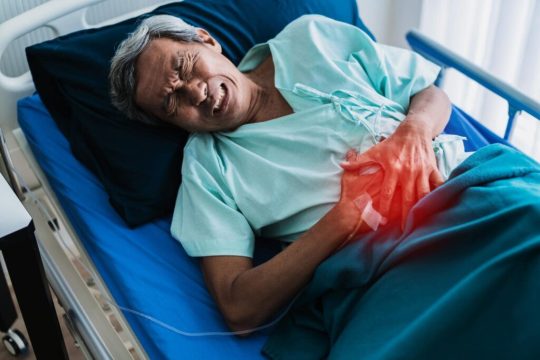
Understanding Kidney Stones: A Comprehensive Guide
Kidney stones are a widespread and painful health issue that affects millions around the world. In India, an estimated 12% of the population is affected by kidney stones (urolithiasis), with a higher prevalence (15%) in northern states. This translates to roughly 5 to 7 million patients annually. If you or someone close to you is dealing with kidney stones, it’s crucial to understand the causes, symptoms, and treatment options available. Fortunately, leading hospitals, such as IBM Hospital in Panipat, offer effective care for kidney stones, ensuring that patients receive the best possible treatment.
What Are Kidney Stones?
Kidney stones are small, hard mineral and salt deposits that form within the kidneys. Although they can vary in size, they often cause significant discomfort while traveling through the urinary tract. Understanding their composition and how they form can help in managing and preventing them effectively.
Types of Kidney Stones
There are different types of kidney stones, each with distinct causes and risk factors:
Calcium Stones: The most commonly found type, these stones are primarily made of calcium oxalate or calcium phosphate.
Uric Acid Stones: These form when there is an excess of uric acid in the urine, often due to conditions like gout or a high consumption of purine-rich foods such as red meat and shellfish.
Struvite Stones: Typically linked to urinary tract infections (UTIs), these stones can grow rapidly and become quite large.
Cystine Stones: These are rare and usually occur due to a hereditary condition called cystinuria, which leads to high levels of cystine in the urine
Why Choose IBM Hospital for Kidney Stone Treatment?
IBM Hospital stands out due to its exceptional medical care and patient-focused approach. Here’s why it’s a top choice:
Expert Urologists: The hospital houses highly skilled urologists, including Dr. Udipt Shringi, who specialize in kidney stone treatment and urological care.
Advanced Technology: IBM Hospital uses the latest technology for accurate diagnosis and treatment, including minimally invasive procedures for kidney stone removal.
Comprehensive Care: From diagnosis to treatment and follow-up care, IBM Hospital offers a patient-first approach, ensuring personalized and compassionate care.
About Dr. Udipt Shringi – Leading Urologist at IBM Hospital
Dr. Udipt Shringi is an expert urologist at IBM Hospital, specializing in kidney stone management, urinary tract issues, and overall urological health. His extensive experience in treating complex cases makes him one of the top urologists in Panipat. With a patient-centered approach, he ensures that each patient receives the best possible care tailored to their individual needs.
Why Trust IBM Hospital for Your Kidney Stone Treatment?
Experienced urologists like Dr. Udipt Shringi
Cutting-edge technology for precise diagnosis and treatment
Comprehensive care with 24/7 emergency services available
Conclusion
Kidney stones can be excruciating, but with the right treatment, they are manageable. If you or a loved one is suffering from kidney stones, don’t hesitate to visit IBM Hospital, one of the leading healthcare providers in Panipat, for expert care. With advanced technology and a team of specialists, you can trust that you’re in good hands.
0 notes
Text
Kidney Stones: Why Do They Occur? Types & Symptoms
Kidney stones are hard deposits made of minerals and salts that develop within the kidneys. They are also referred to as kidney stone disease, renal calculus disease, nephrolithiasis, or urolithiasis. Kidney stones occur due to the concentration and crystallisation of certain substances. These structures vary in size. It can either be tiny particles or larger, more obstructive formations. They not only cause bodily discomfort, but it also disrupts kidney function. It affects the urinary health! Small kidney stones often pass through your urinary tract unnoticed. However, larger ones can cause pain and lead to complications if left untreated.
Synopsis
Why Do Kidney Stones Occur?
Symptoms of Kidney Stones
Types of Kidney Stones
Treatment for Kidney Stones
Why Do Kidney Stones Occur?
Kidney stones may occur for various reasons, starting from lifestyle choices to inherent metabolic issues. A few factors that cause kidney stones symptoms are listed below:
Dehydration
Dehydration is perhaps the most important factor that causes kidney stones. If there is a lack of adequate fluids in your body, the urine becomes concentrated. When your body is dehydrated, it reduces the urine volume. This allows minerals to clump together and form stones. So, staying well-hydrated holds paramount importance in preventing kidney stones. Aim to consume at least 2-3 litres of fluids per day.
Dietary Factors
Your diet may contribute to increasing the risk of kidney stones. It includes:
Oxalate-rich food, like beets, nuts, and certain leafy vegetables bind with urine calcium that may form crystals, resulting in kidney stones.
High sodium intake increases calcium levels in the urine, promoting calcium-containing stones.
A very low-calcium diet may also contribute to kidney stones.
Metabolic Factors
Excessive levels of calcium, oxalate, and uric acid in urine heighten the risk of kidney stones. These issues can be the result of genetic disorders, dietary choices, or certain medical conditions. Consult an expert nephrologist for the right dietary modifications to reduce the risk factors.
Medical Conditions
Some prevalent health issues may make you more susceptible to developing kidney stones.
Urinary Tract Infections (UTIs) create a kidney stone-friendly environment in your body. These infections alter the urine composition. This, in turn, promotes the crystallisation of minerals.
A genetic disorder called Cystinuria increases the cystine levels in the urine. This condition poses a higher risk for recurrent kidney stones.
Renal Tubular Acidosis disrupts your kidney’s ability to acidify the urine effectively. Such an altered urinary environment may contribute to the formation of stones.
Other conditions may include hypocitraturia (low citrate levels), Vit-D deficiency, gout, Hypercalciuria (excessive calcium excretion in urine), and inflammatory bowel disease (chronic inflammation of the gastrointestinal tract).
Symptoms of Kidney Stones
The warning signs of kidney stones may vary from person to person. It usually depends on the severity of the condition.

We suggest you consult a top nephrologist in Whitefield immediately if you notice these symptoms persistently.
Types of Kidney Stones
There are different types of kidney stones, typically characterised by their composition. Understanding them is necessary to manage the issue accordingly.
Calcium Oxalate Stones
Composition: Primarily calcium combined with oxalate. It is the most prevalent type. Causes: High oxalate diet, inadequate fluid intake, and certain metabolic conditions.
Calcium Phosphate Stones
Composition: Mainly calcium combined with phosphate. Causes: High pH in urine, underlying metabolic disorders, or renal tubular acidosis.
Uric Acid Stones
Composition: Uric acid. Causes: High purine diet, dehydration, gout, and certain metabolic conditions.
Struvite Stones
Composition: Composed of magnesium, ammonium, and phosphate. This type is more common in women. Causes: Urinary tract infections (UTIs).
Cystine Stones
Composition: An amino acid called Cystine. It is the least common type. Causes: Often hereditary (cystinuria).
Mixed Composition Stones
Composition: Combination of different minerals. Identifying this type is quite challenging. It may require specialised analysis.
Diagnosing the right type of kidney stone is crucial for accurate treatment methods. Diagnosis can be by a urine sample test, CT scan, abdominal X-ray, or ultrasound. To know more about kidney stone and it treatment read our full blog here.
0 notes
Text
Symptoms of Kidney Stones
Basically, the kidney functions as a filter for blood, removing waste products from the body and making urine. In addition, it helps regulate electrolyte levels that are significant for body function. Urine drains from the kidney through a narrow tube called the ureter into the bladder. When the bladder fills and there is a need to urinate, the bladder empties to the outside through the urethra, a much broader tube in comparison to the ureter.
In some people, chemicals crystallize in the urine and may form a kidney stone. These stones are very tiny when they form, smaller than a grain of sand, but gradually can grow over time to an inch or larger.
Urolithiasis is the term that refers to the presence of stones in the urinary tract, while nephrolithiasis (nephro = kidney + lithiasis = stone) means kidney stones and ureterolithiasis means stones lodged in the ureter.
Types
Calcium stones - Most kidney stones constitute of calcium compounds, especially calcium oxalate.
Uric acid stones - Some kidney stones are formulated of uric acid, a waste product normally passed out of the body in the urine.
Struvite stones - Some kidney stones are struvite stones. They can also be called infection stones if they happen with kidney or urinary tract infections (UTIs).
Cystine stones - Kidney stones are made of a chemical called cystine.
Kidney Stone Symptoms
Extreme pain at the side of their back or lower abdomen: The location of the stone affects the kind of symptoms you get to experience. People have often described the feeling of kidney stones as a sharp pain on one side of their back or lower abdomen. The pain often begins abruptly and lingers, thus becoming more severe over time. Patients experience continual pain that may frequently happen in waves, sometimes last for a few minutes, and disappears. The change in the level of intensity may occur as the stone moves to a different position in the urinary tract.
Blood in the urine (Hematuria): It includes :
Pain while urinating
Urine appears cloudy
Urine that smells differently than it normally does
An urge to urinate more often than usual
Burning sensation while urinating.
Urine color might change to pinkish or reddish. Sometimes blood in the urine can only be detected with a microscopic examination of urine.
Gravels: Though the small stones don’t cause any pain or symptom, they are pretty noticeable in the urine.
Extreme pain during urination: It is one of the most important kidney stone symptoms and shows up when the stone comes down to the ureter.
Other symptoms: Certain categories of kidney stones, called struvite stones, are caused by urinary tract infections which lead to infection in the kidneys as well, the urinalysis shows infectious cells in the urine and leads to symptoms like Nausea, Vomiting, Chills, Fever
Alert in order to timely address and treat the problem. Consult the urologist through online consultation Ask Second Opinion. https://www.asksecondopinion.com/
0 notes
Text
What are the causes of Kidney stones?
What are the causes of Kidney stones?
Kidney stones are hard deposits- that form inside your kidney. It is a common and ancient problem. Even they were found in Egyptian mummies. They are also called renal calculi, urolithiasis, or nephrolithiasis (lithiasis meaning- the formation of stony concentrations). Among the many causes of kidney stones- diet, excess body weight, some medical conditions, certain supplements, and medications…

View On WordPress
#Calcium stones#Causes of kidney stones#Cystine stones#Dehydration#Dietary habits#Kidney stones#nephrolithiasis#Obesity#Renal calculi#Risk factors of kidney stones#Struvite stones#Symptoms of kidney stones#Uric acid stones#urolithiasis
1 note
·
View note
Text
New Post has been published on Health is priceless. Trust the best.
New Post has been published on http://bit.ly/2EFA0mn
Bladder stones
#cystine urolithiasis#nephro urolithiasis#struvite urolithiasis#treatment for urolithiasis#urolithiasis case study#urolithiasis in animals diet#what causes urolithiasis
0 notes
Text
Urinary Stones Treatment Devices Market to Grow at 4.4% CAGR to Reach US$1.98 billion by 2026
The Global Urinary Stones Treatment Devices Market was valued at US$1.48 billion in the year 2018 and is expected to reach US$1.98 billion by 2026, at a CAGR of 4.4%.
Urinary stones are mainly formed due to the inability of an individual to empty the urinary bladder. Due to urine accumulation, the minerals in the concentrated urine start crystalizing leading to the formation of stones. Depending on the location of the stone development it may be classified as a kidney stone, bladder stone or ureteral stone. These stones are diagnosed using, abdominal X-ray, CT scan, MRI scan, ultrasound, etc. During the early days, the stones were removed through surgical procedures. But the development of technologies such as lithotripsy, ureteroscopy, nephrolithotomy had reduced the hurdles in treatment and the removal of urinary stones. Also growing popularity of digital flexible ureteroscopes and rising focus on the development of lasers alternative to conventional once are the factors that contribute to the market growth.
Urolithiasis and Nephrolithiasis are the main conditions that contribute to the development of kidney stones in individuals and chiefly contribute to market growth. Besides, the recurrence of kidney stones in the adult population has also risen to 50% in recent decades due to enormous changes in the lifestyle, poor dietary habits, an increase in obesity, less intake of water and many other associated morbidities. Moreover, as recent research suggested, the probability of recurrence of nephrolithiasis in adolescents or children is about 50% within 3 years of the first occurrence. According to the National Kidney Foundation, over half a million people across the globe visit emergency rooms every year. International Federation of Kidney Foundations and the International Society of Nephrology are taking several initiatives to create awareness among the people regarding the equitable and inexpensive access to treatment options, screening, and diagnosis. This is set to drive the Urinary Treatment Devices market during the forecast period.
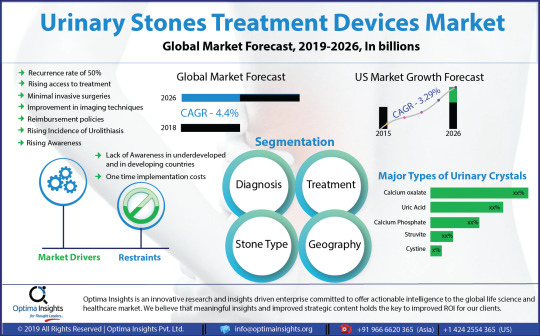
Implementation of imaging technologies for scanning urinary stones is expected to drive the growth in the upcoming years. Among diagnoses, the ultrasound segment emphasizes reducing the amount of ionizing radiation delivered to patients during routine imaging. It has also become a mainstay tool in the urologists' armamentarium for the diagnosis and management of nephrolithiasis. New advancements in ultrasound technology had also facilitated its use as a therapeutic and therapy guidance aid. Ultrasound is being used as the first line for the diagnosis of urinary stones for more than 14 years and is set to grow with a healthy CAGR of 5.1% during the forecast period. Other diagnostic techniques such as MRI, intravenous pyelogram, non-contrast CT are said to contribute very little when compared to ultrasound.
Adoption of an alternative way of treatment such as Chinese herbal medicine, Ayurveda, acupressure was minimal during the yesteryears. However, after the rediscovery of the ancient techniques, the options for treating urinary stones with herbal medicine, acupressure, etc. are being researched more and few options have also become successful in minimizing the urinary stones. This is set to hamper the market growth as WHO had already initiated a global level initiative to study and standardize the usage of medicinal plants including that of the folklore medicine.
However modern medicine offers an effective way of treatment. Among them, the lithotripsy segment has a huge demand in the market treating urinary stones and also to sidestep the invasive surgical procedures that were used for stone removal. Lithotripsy uses ultrasonic energy or shock waves focused directly on the stone to identify the place which was previously located with fluoroscopy or ultrasound of the stones. The patient is positioned in such a way so that the stones are targeted precisely. By using this lithotripsy, the complications, hospital stays, costs and recovery time are reduced. The treatment using lithotripsy is expected to fuel market growth until 2026.
Among stone types, the calcium oxalate segment has been reported to propel the urinary stones market till 2018. The formation of calcium oxalate stones is strongly linked to the consumption of foods consisting high amount of oxalate that naturally occurs in plants and animals. This includes beets, black tea, chocolate, nuts, potatoes, and spinach. Also, calcium in the form of supplements for several other bone-related disorders may increase the chances of forming new calcium oxalate stones in the urine. Also, consumption of more leguminous foods such as dried beans, peas, anchovies and drinking of beer may increase the chances of uric acid crystal formation due to the deposition of purines in the kidney.
North American region highly dominates the urinary stones treatment devices market due to extensive prevalence in the occurrence of urinary stones. The favorable conditions for research and development, increased healthcare expenditure and growing utilization of advanced technology for the treatment aspects are evident in this region. The US market holds a market share of about 65% to 35% whereas the Canadian market share is set to increase by around 2% during the forthcoming years due to more immigration from other countries. Further, government initiatives towards strengthening the healthcare infrastructure are accelerating the growth of the urinary stone treatment devices market in this region. Followed by the North American region is the European region, where Germany alone contributes to more than 27% of the total European market growth due to more occurrence of Urolithiasis among German individuals followed by France, the UK, Italy, and Spain. Besides, the Asia Pacific and the Middle East countries are also expected to contribute to the market growth having potential opportunities falling under the kidney stone belt of the world.
Some of the key players in the urinary stones treatment devices market are, Becton, Dickinson and Company, Boston Scientific Corporation, EDAP TMS S.A., Olympus Corporation, Coloplast A/S, Siemens Healthineers, Convergent Laser Technologies, Cook Medical Inc, Direx Group, Dornier MedTech GmbH, Elmed Electronics & Medical Industry & Trade Inc, KARL STORZ GmbH & Co. KG, Lumenis Ltd, Medispec LTD, Richard Wolf Medical Instruments Corporation, Allengers Medical Systems Ltd and E.M.S. Electro Medical Systems SA.
Request for Sample Pages @ https://www.optimainsights.org/sample-request/145-urinary-stones-treatment-devices-market
Key Updates:
FDA Approves Retrophin’s New Formula Thiola EC (tiopronin) for treating Cystine Kidney Stones
Dornier’s new Gemini stone-busting system: The pulverizer is both a step into the future and a blast from the past
Dornier launches AXIS™ Single-Use Digital Ureteroscope for treating Urinary Stones
Journal Summaries in Internal Medicine: Researchers examined the utility of experimental Thulium fiber laser (TFL) as an alternative to the gold standard Holmium: YAG laser for lithotripsy
The Report Provides Key Insights on
History of the Urinary Stones Treatment Devices Market, 2015 to 2017
Forecast of the Urinary Stones Treatment Devices Market Growth till the year 2026
The key market drivers, restraints, challenges, future opportunities and the market dynamics driving the Urinary Stones Treatment Devices Market
Analysis of potential growth segments which will drive the market
Landscape analysis of the major companies, and new market entrants and companies which possess disruptive technologies which can change the trend of the entire market
Key market approaches adopted by the organizations and in-depth intelligence of potential strategies which could alter the market dynamics
Urinary Stones Treatment Devices Market Based on Diagnosis (Market Size and Forecast, and Y-o-Y Growth, (US$ Mn)
· Abdominal X-Ray
· Computed Tomography(CT) Scan
· Intravenous Pyelography (IVP)
· Ultrasound
· Abdominal MRI
Urinary Stones Treatment Devices Market Based on Treatment (Market Size and Forecast, and Y-o-Y Growth, (US$ Mn)
· Percutaneous Nephrolithotomy (PCNL)
· Ureteroscopy (URS)
· Extracorporeal Shock Wave Lithotripsy (ESWL)
Urinary Stones Treatment Devices Market Based on Stone Type (Market Size and Forecast, and Y-o-Y Growth, (US$ Mn)
· Calcium Phosphate
· Cystine
· Struvite
· Uric Acid
· Calcium Oxalate
Urinary Stones Treatment Devices Market Based on Geographic Region (Market Size and Forecast, and Y-o-Y Growth, (US$ Mn)
· North America
· Europe
· APAC
· LAMEA
Urinary Stones Treatment Devices Market Competitive Analysis (Company Overview, SWOT Matrix, Financial, Product Overview, and Market Strategies)
· Siemens Healthineers
· Direx Systems Corp
· Dornier Medtech Gmbh
· Elmed Electronics & Medical Industry & Trade Inc
· Karl Storz Gmbh & Co. KG
· Lumenis Ltd
· Medispec Ltd
· E.M.S. Electro Medical Systems SA
Download Complete TOC of the Report @ https://www.optimainsights.org/request-toc/145-urinary-stones-treatment-devices-market
About Us
Optima Insights is an innovative research and insights-driven enterprise committed to offering actionable intelligence to the global life science and healthcare market. We believe that meaningful insights and improved strategic content hold the key to improved ROI for our clients. We strike an innovative engagement model with our clients to Co-Create Intelligence that would address very specific issues facing them within their functional areas. We continuously support clients through the entire journey map to enable them to make better business decisions towards attaining market leadership.
Contact
Optima Insights
Mr. Chucks G
+91 966 6620 365 (Asia) | +1 424 2554 365 (US)
Email: [email protected]
https://www.optimainsights.org
#Urinary stones treatment devices market#Urinary Stones Treatment Devices Market Analysis#Urinary Stones Treatment Devices Market Forecast
0 notes
Text
Urolithiasis
Stones can be located anywhere along the urinary tract - nephrolith, ureterolith, urocystolith, urethrolith.
Signs of urolithiasis may include: - Abdominal pain - Abnormalities of urination (difficulty, frequency, blood) - Straining with the absence of urine (this is an emergency - obstruction) - Anorexia - Vomiting - Depression - Palpation of stone in empty bladder or urethra per rectum
Diagnostics:
Bloodwork If blockage may see post renal azotemia - increased K, P, BUN, creatinine.
Urinalysis Urinary tract inflammation - hematuria, pyuria, may see bacteriuria. Urine pH - struvite crystals precipitate in alkaline urine. Crystals - presence does not mean there are stones, absence does not mean there are not stones. Can be observed in normal individuals.
What is the relationship between stones and UTIs? Stones may lead to infection - mucosal damage, incomplete voiding, bacterial entrapment in stones. UTIs may lead to stones - urease producing bacteria can alkalinize urine.
Radiographs Stones only visible if >1mm in diameter. Generally radiopaque (visible on radiograph) - struvite and calcium oxalate. Asses bladder size - evidence of obstruction? Ultrasound is superior for detection as it detects all types of stones (urate, cystine, and calcium phosphate may not show up on radiograph).
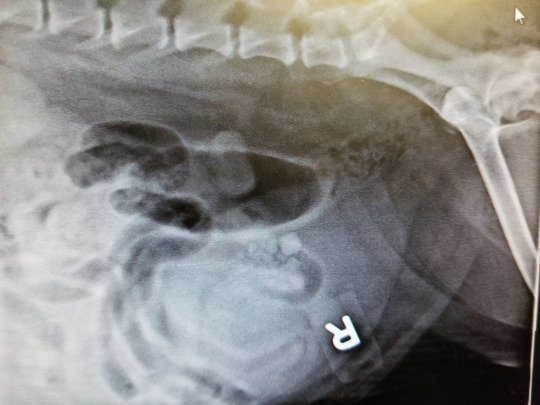
Above is a lateral view demonstrating stones within the bladder. A V/D was also obtained. Always take at least two views. This patient presented for increased frequency of small amounts of urine.
Types of stones:
Struvite Accounts for 50% of canine stones and 30% of feline stones. UTI may predispose to the formation through acidification of the urine.
Calcium Oxalate Accounts for 35% of canine stones and 50-70% of feline stones.
Urate Seen in dogs with portosystemic shunts - high excretion of ammonium biurate crystals. Seen in dalmations - defective hepatic transport of uric acid. My not show on radiographs - show up on ultrasound.
Cystine Inherited disorder - excessive elimination of cystine in the urine. Most commonly seen in male Dachshunds between age 3-6. Stones may show faintly on radiographs - show up on ultrasound.
Silicate Linked to consumption of large amounts of corn gluten and soybean hulls (high in silicates).
Treatment:
Treatment largely depends on the presentation of the patient. Medical management is not suitable for many patients (obstruction occurring or imminent, stone type not known, very large stones, sharp stones etc). If obstructed, emergency intervention is required.
Medical Management Calcium oxalate, urate, cystine, and silicate stones CAN NOT be dissolved and require surgical removal. Struvite stones can occasionally be dissolved with a special diet.
Surgical Treatment Stones may be removed surgically. Surgery varies depending upon the location of the stone. Bladder stones are removed via cystotomy which is often performed in general practice. Stones should be sent away for analysis to determine the appropriate steps moving forward (ie diet).
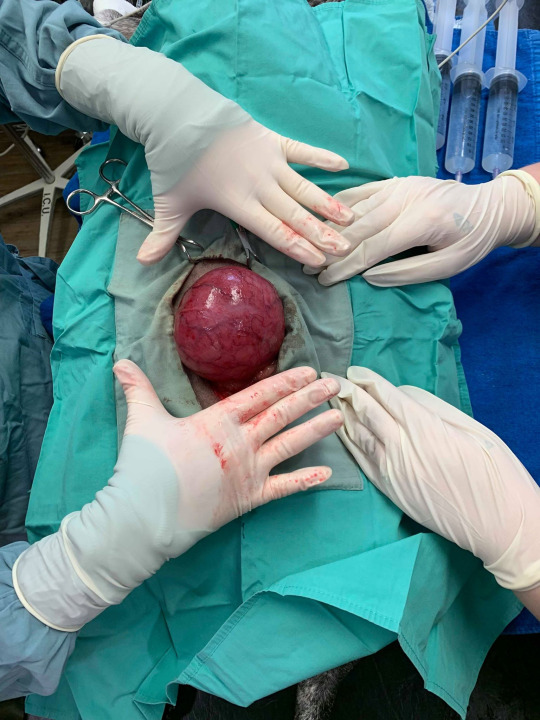
Above is an exposed bladder at the start of a cystotomy procedure. The patient was only passing small amounts of urine. Over 300ml of urine was removed from the bladder before an incision was able to be made.
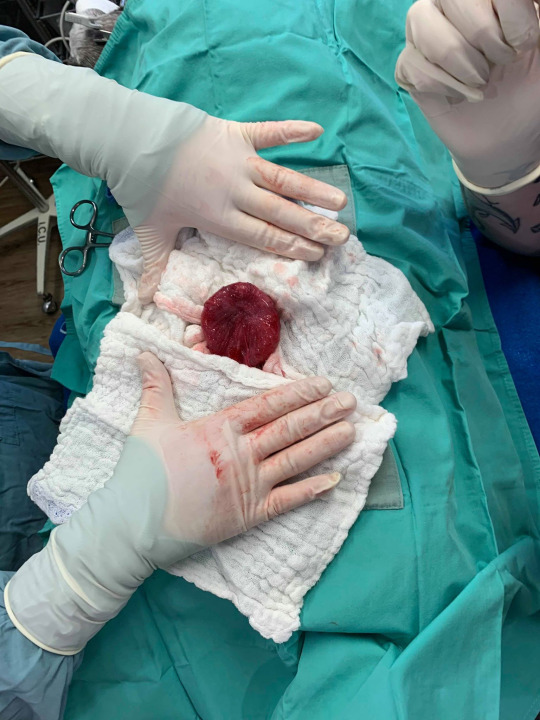
Above is the same bladder after emptying the urine via cystocentesis, before incision.
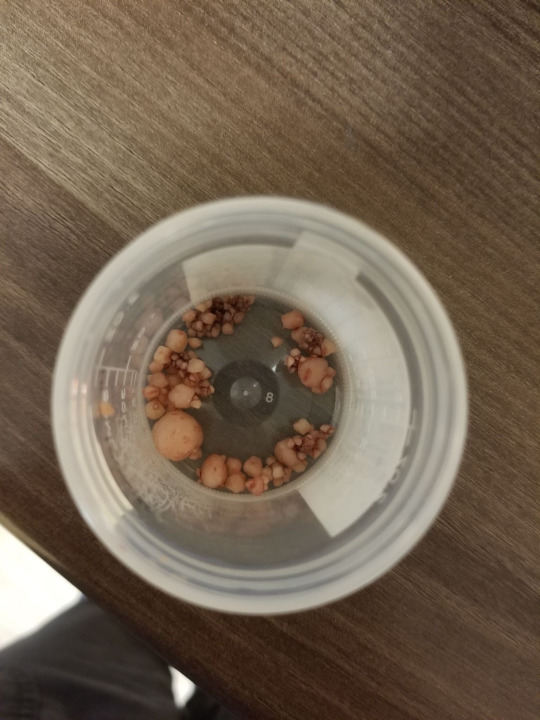
Above are the stones that were removed from the bladder and urethra. The largest stone pictured was located within the urethra, causing a partial obstruction. The stones were sent away for analysis.
Aftercare Many of these stones have a high occurrence rate. Prevention with the appropriate prescription diet is essential. Treatment of concurrent urinary tract infection is essential. Appropriate monitoring is helpful in guiding recommendations moving forward - ie follow up urinalysis.
16 notes
·
View notes
Text
Ayurvedic Treatmet for Kidney Stones?
One of the most prevalent and uncomfortable conditions among urinary illnesses, renal or kidney stones are one of the main causes of abdominal pain in modern society. The presence of a stone or calcium in the urine system is known as renal stones or urolithiasis (kidney, ureter, bladder, and urethra).
Calculus Ashmari is made up of the terms “Ashma” and “Ari.” The words “Ashma” and “Ari” both refer to stones. Ashmari (calculi), also known as Moothrashmari (urolithiasis), is a condition of the urinary tract that involves the production of a stone or stones, which causes excruciating pain as if an adversary were there.
The two processes of stone creation are described by Acharya Sushruta. One is caused by crystal-forming chemicals, such as calcium, oxalate, and uric acid, supersaturating and causing stagnation in the urine, which is preventable by diluting the urine’s fluid. The conditions for kidney stones to form are favorable if your urine lacks chemicals that keep crystals from adhering to one another.
Etiology or causes in Ayurveda of Renal Stones
1. refusal to adopt Pancha-karma (five methods of purification of the body), 2. improper eating and living, 3. factors related to geography, diet, and heredity, 4. hormonal impacts, metabolic instability, and bladder infections.
Risk factors:
The following risk factors increase the possibility of kidney stones:
1. A high body mass index (BMI) and weight gain are directly related to an elevated risk of kidney stones in people who are obese. 2. Family history: If kidney stones run in your family, you are more likely to develop them yourself. 3. Dehydration: Kidney stones are more likely to form if you don’t drink enough water and live in a warm region. 4. Dietary variables: Eating a diet high in protein, sodium (salt), and sugar may make you more likely to develop kidney stones. 5. Digestive conditions and surgery: Certain conditions, such as persistent diarrhea and gastric bypass surgery, might alter calcium absorption and raise the risk of stone development. 6. The likelihood of stone production might be increased by other medical problems like cystinuria, urinary tract infections, and renal tubular acidosis (RTA).
Types of Real Stones
Different forms of urinary calculi, such as calcium stones, struvite stones, uric acid stones, cystine stones, and mixed stones, are described in modern medicine based on their chemical makeup and shape.
The four types of ashmari identified by Ayurvedic Treatment for Kidney Stones are Vatika, Paitika, Shlaishmika, and Shukraja.
Stones made of calcium oxalate, uric acid, and calcium phosphate may resemble the Vatika, Paitika, and Shlaishmika Ashmari, respectively.
Signs and symptoms
1. extreme discomfort in the penis, scrotum, and urine bladder , 2. thick and cloudy urine, 3. pee smell that is comparable to Gomed’s (hessonite stone), 4. Anorexia, dysuria, a fever, and body aches 5. According to Acharya Sushruta, activities like jumping, swimming, sprinting, riding, and walking might make Ashmari’s agony worse.
1 note
·
View note
Text
When should I be concerned about kidney pain?
Kidney stones (also called renal calculi, nephrolithiasis, or urolithiasis) are hard deposits made of minerals and salts that form inside your kidneys. A small, hard deposit that forms in the kidneys and is often painful when passed. Kidney stones are hard deposits of minerals and acid salts that stick together in concentrated urine. They can be painful when passing through the urinary tract, but usually don’t cause permanent damage.
The most common symptom is severe pain, usually in the side of the abdomen, that’s often associated with nausea.
Diet, excess body weight, some medical conditions, and certain supplements and medications are among the many causes of kidney stones. Possible causes include drinking too little water, exercise (too much or too little), obesity, weight loss surgery, or eating food with too much salt or sugar. Infections and family history might be important in some people. Eating too much fructose correlates with increasing risk of developing a kidney stone.
Treatment includes pain relievers and drinking lots of water to help pass the stone. Medical procedures may be required to remove or break up larger stones.
There are different types of kidney stones. The cause of the problem depends on the type of stone.
Stones can form when urine contains too much of certain substances that form crystals. These crystals can develop into stones over weeks or months.
Calcium stones are most common. They are most likely to occur in men between ages 20 to 30. Calcium can combine with other substances to form the stone.
Oxalate is the most common of these. Oxalate is present in certain foods such as spinach. It is also found in vitamin C supplements. Diseases of the small intestine increase your risk for these stones.
Calcium stones can also form from combining with phosphate or carbonate.
Other types of stones include:
Cystine stones can form in people who have cystinuria. This disorder runs in families. It affects both men and women.
Struvite stones are mostly found in men or women who have repeated urinary tract infections. These stones can grow very large and can block the kidney, ureter, or bladder.
Uric acid stones are more common in men than in women. They can occur with gout or chemotherapy.
Other substances, such as certain medicines, also can form stones.
The main symptom is severe pain that starts and stops suddenly:
Pain may be felt in the belly area or side of the back.
Pain may move to the groin area (groin pain), testicles (testicle pain) in men, and labia (vaginal pain) in women.
Other symptoms can include:
Abnormal urine color
Blood in the urine
Chills
Fever
Nausea and vomiting
Lithotriptic:
Having the quality of or used for dissolving or destroying stone in the bladder or kidneys.
Lithotriptic agents are an agent that effects the dissolution of a calculi.
Urricali tablet & syrup is a natural Lithotriptic. It facilitates the passage of urinary calculi by diuretic action. Apart from disintegration of stones and flushing them out, Urricali tablet & syrup also prevents their recurrence. It also effectively cures and prevents urinary tract infections. Urricali perceptively encourages healthy urinary track and helps to keep up a normal urine composition add mucosal integrity. Urricali tablet & syrup possess anti-spasmodic and anti-inflammatory properties which helps to reduce ureteric colic and ease the condition sore and burning micturition.
To know more: https://lamarworld.co/when-should-i-be-concerned-about-kidney-pain/
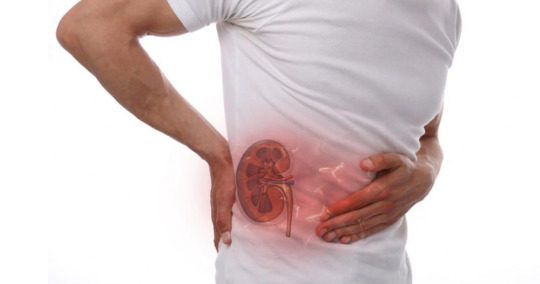
0 notes
Link
0 notes
Text
Kidney Stones: Causes, Symptoms, Treatment, and Prevention – A Complete Guide
FacebookMessengerWhatsApp

Understanding Kidney Stones: A Comprehensive Guide
Kidney stones are a widespread and painful health issue that affects millions around the world. In India, an estimated 12% of the population is affected by kidney stones (urolithiasis), with a higher prevalence (15%) in northern states. This translates to roughly 5 to 7 million patients annually. If you or someone close to you is dealing with kidney stones, it’s crucial to understand the causes, symptoms, and treatment options available. Fortunately, leading hospitals, such as IBM Hospital in Panipat, offer effective care for kidney stones, ensuring that patients receive the best possible treatment.
What Are Kidney Stones?
Kidney stones are small, hard mineral and salt deposits that form within the kidneys. Although they can vary in size, they often cause significant discomfort while traveling through the urinary tract. Understanding their composition and how they form can help in managing and preventing them effectively.
Types of Kidney Stones
There are different types of kidney stones, each with distinct causes and risk factors:
Calcium Stones: The most commonly found type, these stones are primarily made of calcium oxalate or calcium phosphate.
Uric Acid Stones: These form when there is an excess of uric acid in the urine, often due to conditions like gout or a high consumption of purine-rich foods such as red meat and shellfish.
Struvite Stones: Typically linked to urinary tract infections (UTIs), these stones can grow rapidly and become quite large.
Cystine Stones: These are rare and usually occur due to a hereditary condition called cystinuria, which leads to high levels of cystine in the urine
Key Causes of Kidney Stones
Several factors contribute to the development of kidney stones. Understanding these causes can help in prevention and early intervention:
Dehydration: Inadequate fluid intake leads to more concentrated urine, increasing the likelihood of stone formation.
Dietary Factors: A diet high in sodium, protein, and oxalate-rich foods can contribute to stone development.
Obesity: Being overweight increases the risk of kidney stones due to changes in the body’s metabolic processes.
Genetics: A family history of kidney stones can raise the risk of developing them yourself.
Certain Medical Conditions: Conditions such as gout, Crohn’s disease, and hyperparathyroidism can predispose individuals to kidney stones.
Common Symptoms of Kidney Stones
The symptoms of kidney stones can be quite severe and may include:
Intense pain, often in the lower back, side, or abdomen
Blood in the urine (hematuria)
Nausea and vomiting
Frequent urination or difficulty urinating
Fever and chills (if there’s a concurrent infection)
Intense pain, often in the lower back, side, or abdomen
Blood in the urine (hematuria)
Nausea and vomiting
Frequent urination or difficulty urinating
Fever and chills (if there’s a concurrent infection)
Best Kidney Stone Treatment in Panipat
For those seeking the best medical care, IBM Hospital in Panipat is one of the top medical centers offering advanced and effective treatments for kidney stones. The hospital is equipped with state-of-the-art diagnostic tools and a team of specialized urologists who provide expert care for kidney stone patients.

Why Choose IBM Hospital for Kidney Stone Treatment?
IBM Hospital stands out due to its exceptional medical care and patient-focused approach. Here’s why it’s a top choice:
Expert Urologists: The hospital houses highly skilled urologists, including Dr. Udipt Shringi, who specialize in kidney stone treatment and urological care.
Advanced Technology: IBM Hospital uses the latest technology for accurate diagnosis and treatment, including minimally invasive procedures for kidney stone removal.
Comprehensive Care: From diagnosis to treatment and follow-up care, IBM Hospital offers a patient-first approach, ensuring personalized and compassionate care.
About Dr. Udipt Shringi – Leading Urologist at IBM Hospital
Dr. Udipt Shringi is an expert urologist at IBM Hospital, specializing in kidney stone management, urinary tract issues, and overall urological health. His extensive experience in treating complex cases makes him one of the top urologists in Panipat. With a patient-centered approach, he ensures that each patient receives the best possible care tailored to their individual needs.
Why Trust IBM Hospital for Your Kidney Stone Treatment?
Experienced urologists like Dr. Udipt Shringi
Cutting-edge technology for precise diagnosis and treatment
Comprehensive care with 24/7 emergency services available
Conclusion
Kidney stones can be excruciating, but with the right treatment, they are manageable. If you or a loved one is suffering from kidney stones, don’t hesitate to visit IBM Hospital, one of the leading healthcare providers in Panipat, for expert care. With advanced technology and a team of specialists, you can trust that you’re in good hands.
1 note
·
View note
Link
https://www.theauric.com/blogs/news/kidney-stone-ayurveda-the-only-care-tips-you-need-to-know
0 notes
Text
New Post has been published on Health is priceless. Trust the best.
New Post has been published on http://bit.ly/2F8SH2X
Dailymed - forteo- teriparatide injection, solution
#anti urolithiasis diuretic#cystine urolithiasis#definition of urolithiasis#icd 10 code for urolithiasis#urolithiasis adalah pdf#urolithiasis differential diagnosis#urolithiasis in animals
0 notes
Link
By: Saiqa Rasool Memon, Gul Afshan Soomro, Ghulam Abbas Shar, Muhammad Bachal Korai, Nisar Abbas Shar
Key Words: Renal calculi, Calculi composition, Cystine calculi, FT-IR
J. Bio. Env. Sci. 17(1), 102-108, July 2020.
Renal calculi illness is also referred to as urolithiasis or nephrolithiasis. Urolithiasis has become the third most frequent medical disorder globally. Pakistan has probably the most significant incidence of kidney stones. The detection of stone components is most important, since it gives the data which may be helpful to health professionals in finding the main cause of renal calculi and deciding whether they should be treated in a therapeutic or surgical manner. The purpose of present work was to assess the constitutes of renal calculi removed via laparoscopic surgery from the affected persons in the Peoples University of Medical & Health Sciences for Women, Shaheed Benazir Abad, Nawab Shah, Sindh, Pakistan. The renal stones were assessed by FT-IR for their constitutional study. Out of 60 investigated specimen of renal calculi, 32/60 (53.3%) were calcium oxalate, 12/60 (20%) were calcium phosphate, 09/60 (15%) were uric acid calculi, 04/60 (6.7%) were struvite and cysteine calculi were 03/60 (5%). The current study showed that the calcium oxalate calculi were the most prevalent (53.3%) while the cysteine calculi were the lowermost prevalent (5%) among the all collected and examined calculi. Check out more Assessment of constituents of the renal calculi in affected patients
About innspub Journals
INNSPUB Journals is a scholarly research journal publishing company that published open access research journals in different fields of natural sciences.
1 note
·
View note
Text
What Is a Urologist and Why Do I Need to Visit One?
Urology is the branch of medicine concerned with medical and surgical diseases of the urinary tract system of both males and females. It also focuses on the male reproductive organs. Urologists are doctors who specialise in urology. They are trained to medicate diseases of the urinary tract and male reproductive system.
However, for many people visiting a urologist becomes awkward. Especially if it is an opposite gender physician hence, depending on your comfort level, you can consider visiting a lady urologist near you or a male urologist, whichever suits you best.
But, when should one consult a urologist?
Below are the reasons when you must visit a urologist.
Trouble with Bladder Control
Urinary incontinence (UI), which means loss of bladder control, is a definite sign to consult a urologist. It is also sometimes called a leaky bladder. It is a very common issue that makes one feel embarrassed. It mostly occurs with ageing. The severity of loss of bladder control ranges from sometimes leaking urine when you cough or sneeze to having no control over your urge to urinate at all times. This incontinence can have an impact on your daily life as well. Hence, you must visit a specialist.
Blood in your Urine
The presence of blood in a person's urine is medically known as hematuria. There are various reasons which can lead to causing blood in the urine. Some of these include infections, rare blood disorders, cancer etc. To know about it in its entirety, you must visit a urologist. Sometimes, one might not be able to spot blood in the urine despite it being there. This is known as microscopic hematuria. And, being able to see blood in urine with the naked eye is known as gross hematuria.
Experiencing Erectile Dysfunction
Many men face erectile dysfunction (ED). However, they choose not to talk about it. This is completely wrong. If you are experiencing erectile dysfunction, you must not ignore it.
There are various reasons which cause erectile dysfunction. These include medication, diabetes, injury to the pelvic region. You should consult a urologist, and she can help you diagnose and treat the issue.
Male Infertility
If your spouse and you, despite trying to conceive innumerable times, have failed. Then both of you must seek a doctor's help. In the case of a male, you must consult a urologist and get your fertility checked.
Urologists can perform the following tests:
Hormone testing
Sperm function testing
Scrotal ultrasounds
Testicular biopsy
Genetic testing
Post-ejaculation urinalysis
Kidney Stones
Kidney stones are also known as renal calculi, nephrolithiasis or urolithiasis.
When there is insufficient fluid and too much waste in your kidney, chemicals in the urine form kidney stones. It gets very painful to urinate when a person is facing kidney stones.
There are four types of kidney stones.
Calcium oxalate
Cystine stones
Struvite stones
Uric acid stones.
To avoid kidney stones, you must keep yourself hydrated.
To know more about urologists, head to Chhaa Jaa.
Related Blogspot:
Vaginal Discharge: Causes, Treatments, and Colors
How to Avoid Pregnancy, When to Take a Test, and More
Things You Should Always Discuss with Your Gynecologist
0 notes
Text
Common Risk factors or symptoms for Kidney Stones?
Kidney stones (also called renal calculi, nephrolithiasis, or urolithiasis) are hard deposits made of minerals and salts that form inside your kidneys. A small, hard deposit that forms in the kidneys and is often painful when passed. Kidney stones are hard deposits of minerals and acid salts that stick together in concentrated urine. They can be painful when passing through the urinary tract, but usually don’t cause permanent damage.
The most common symptom is severe pain, usually in the side of the abdomen, that’s often associated with nausea.
Diet, excess body weight, some medical conditions, and certain supplements and medications are among the many causes of kidney stones. Possible causes include drinking too little water, exercise (too much or too little), obesity, weight loss surgery, or eating food with too much salt or sugar. Infections and family history might be important in some people. Eating too much fructose correlates with increasing risk of developing a kidney stone.
URRICALI TABLETS
Treatment includes pain relievers and drinking lots of water to help pass the stone. Medical procedures may be required to remove or break up larger stones.
There are different types of kidney stones. The cause of the problem depends on the type of stone.
Stones can form when urine contains too much of certain substances that form crystals. These crystals can develop into stones over weeks or months.
Calcium stones are most common. They are most likely to occur in men between ages 20 to 30. Calcium can combine with other substances to form the stone.
Oxalate is the most common of these. Oxalate is present in certain foods such as spinach. It is also found in vitamin C supplements. Diseases of the small intestine increase your risk for these stones.
Calcium stones can also form from combining with phosphate or carbonate.
Other types of stones include:
Cystine stones can form in people who have cystinuria. This disorder runs in families. It affects both men and women.
Struvite stones are mostly found in men or women who have repeated urinary tract infections. These stones can grow very large and can block the kidney, ureter, or bladder.
Uric acid stones are more common in men than in women. They can occur with gout or chemotherapy.
Other substances, such as certain medicines, also can form stones.
The main symptom is severe pain that starts and stops suddenly:
Pain may be felt in the belly area or side of the back.
Pain may move to the groin area (groin pain), testicles (testicle pain) in men, and labia (vaginal pain) in women.
Other symptoms can include:
Abnormal urine color
Blood in the urine
Chills
Fever
Nausea and vomiting
Lithotriptic:
Having the quality of or used for dissolving or destroying stone in the bladder or kidneys.
Lithotriptic agents are an agent that affects the dissolution of a calculi.
Urricali tablet & syrup is a natural Lithotriptic. It facilitates the passage of urinary calculi by diuretic action. Apart from disintegration of stones and flushing them out, Urricali tablet & syrup also prevents their recurrence. It also effectively cures and prevents urinary tract infections. Urricali perceptively encourages a healthy urinary tract and helps to keep up a normal urine composition and add mucosal integrity. Urricali tablets & syrup possess antispasmodic and anti-inflammatory properties which helps to reduce ureteric colic and ease the condition of sore and burning micturition.
To know more: https://lamarworld.co/product/urricali-tablets-60s/
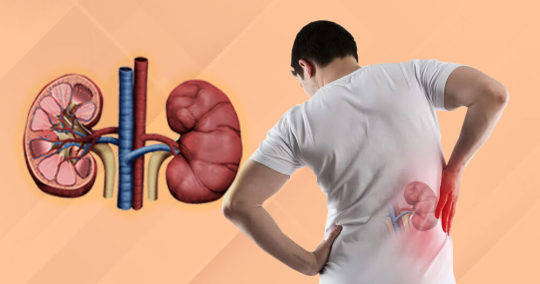
0 notes